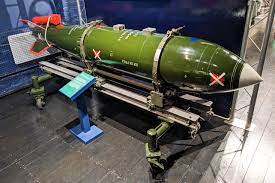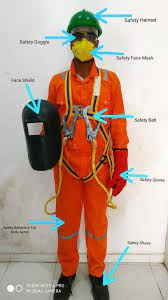Bomb: A Menace to Society
In today’s world, the word “bomb” carries a heavy weight and conjures up images of destruction and chaos. It is a term that strikes fear into the hearts of people everywhere. Bombs, whether in the form of explosives or improvised devices, have become a dangerous tool used by individuals or groups to inflict harm and sow terror. The impact of a bomb goes far beyond physical damage; it leaves lasting scars on communities and individuals.
The history of bombs dates back centuries, with their first recorded use dating back to ancient China in the 9th century. Over time, their design and capabilities have evolved significantly, becoming more sophisticated and devastating. From World War I to the present day, bombs have been used as weapons of war, acts of terrorism, and tools for political manipulation.
The consequences of a bomb blast are catastrophic. Lives are lost or forever altered in an instant. The physical damage to buildings, infrastructure, and public spaces is immense. The psychological impact on survivors and witnesses can be long-lasting, leading to post-traumatic stress disorder (PTSD) and other mental health issues.
Efforts to combat this menace have been ongoing worldwide. Governments invest heavily in intelligence gathering and security measures to prevent bomb attacks. Law enforcement agencies work tirelessly to dismantle terrorist networks and disrupt their plans before they can be executed. Technological advancements aid in detecting explosive materials at airports, train stations, and other high-risk areas.
However, eradicating this threat entirely remains a daunting challenge. The accessibility of bomb-making materials poses a constant risk. Additionally, the rise of online platforms has made it easier for individuals with malicious intent to access bomb-making instructions or connect with extremist ideologies.
Education plays a crucial role in addressing this issue effectively. Raising awareness about the devastating consequences of bombs is essential for fostering a sense of responsibility within society. Encouraging individuals to report suspicious activities or packages can help prevent potential attacks. Communities must come together to support one another and promote peace, tolerance, and understanding.
It is also essential to address the underlying causes that drive individuals or groups to resort to such extreme measures. Socioeconomic disparities, political instability, religious extremism, and ideological differences are factors that contribute to the rise of violence and terrorism. By addressing these root causes through dialogue, diplomacy, and inclusive governance, we can strive towards a more peaceful world.
In conclusion, bombs are a menace that threatens the fabric of society. The devastating consequences they bring should not be taken lightly. It is our collective responsibility to remain vigilant, report suspicious activities, and work towards addressing the underlying causes that lead individuals down this destructive path. Only through unity and understanding can we hope to overcome this menace and build a safer future for generations to come.
Frequently Asked Questions About Bombs: Explained
- What is a bomb?
- How does a bomb work?
- What are the different types of bombs?
- How do you make a bomb?
- What are the effects of a bomb explosion?
What is a bomb?
A bomb is an explosive device designed to cause destruction, damage, or harm. It typically consists of a container filled with explosive materials, such as gunpowder or chemicals, along with a triggering mechanism that initiates the explosion. Bombs can come in various forms and sizes, ranging from small improvised devices to large-scale weapons used in warfare.
Bombs are created with the intention of causing devastation and instilling fear. They can be used for a variety of purposes, including acts of terrorism, military operations, or unlawful activities. Bombs may be detonated through various means, such as timers, remote control devices, or even by suicide bombers.
The effects of a bomb explosion can be catastrophic. The blast wave generated by the detonation can cause extensive damage to buildings and infrastructure within its vicinity. Flying debris and shrapnel from the explosion pose a significant threat to human life and can result in severe injuries or fatalities. Additionally, the shockwave produced by the blast can lead to structural collapses and secondary hazards like fires or gas leaks.
Bombs have been utilized throughout history in conflicts and acts of violence. Their destructive power has made them a weapon of choice for those seeking to inflict harm on others or achieve their objectives through force. However, it is important to note that the use of bombs is highly illegal and condemned by international laws and conventions.
Efforts to combat the use of bombs involve extensive security measures, intelligence gathering, and law enforcement operations aimed at preventing attacks before they occur. Technological advancements have also played a crucial role in detecting explosive materials and enhancing overall safety in public spaces.
In summary, a bomb is an explosive device designed to cause destruction and harm. Its purpose is often malicious and driven by individuals or groups seeking to instill fear or achieve their goals through violence. The consequences of bomb explosions can be devastating both physically and psychologically. Therefore, preventing their use through proactive measures remains a top priority for governments and security forces worldwide.
How does a bomb work?
A bomb is a device designed to explode and release a tremendous amount of energy in a short period. The specific workings of a bomb can vary depending on its type and design, but the basic principles remain the same.
- Explosive Material: The core component of any bomb is an explosive material. This substance has a high potential energy that can be rapidly released through a chemical reaction, producing a large volume of gas and heat. Common explosive materials include dynamite, C-4, TNT, or homemade mixtures like ammonium nitrate fuel oil (ANFO).
- Initiator: To trigger the explosion, a bomb requires an initiator or detonator. This small device typically contains a primary explosive material that is sensitive to heat, shock, or electrical current. When activated by an external stimulus such as an electrical signal or impact, the initiator initiates the detonation process.
- Detonation Process: Once the initiator is activated, it generates a shockwave or flame that propagates through the main explosive material. This shockwave triggers a rapid chemical reaction called detonation. The detonation front moves through the explosive material at supersonic speeds, causing it to rapidly decompose and release enormous amounts of energy.
- Blast Effect: The explosion creates a blast wave characterized by high pressure and rapid expansion of gases. This blast wave travels outward in all directions from the point of detonation, causing destruction and damage to surrounding objects and structures.
- Shrapnel: Some bombs are designed to produce additional lethal effects by incorporating shrapnel into their design. Shrapnel refers to fragments such as metal balls, nails, screws, or other objects that are placed inside the bomb casing or packed around it. When the bomb explodes, these fragments are propelled outward at high velocities, increasing casualties and damage.
- Secondary Effects: Depending on the intended purpose of the bomb, secondary effects may be incorporated into its design. These can include incendiary components to start fires, chemical agents to cause poisoning or suffocation, or radiological materials to spread harmful radiation.
It’s important to note that the information provided here is a general overview and does not encompass all types of bombs or explosive devices. The construction and functionality of a bomb can be highly complex and can vary depending on the intentions of those who create them.
What are the different types of bombs?
There are various types of bombs, each designed for specific purposes and with different mechanisms. Here are some common types of bombs:
- Explosive Bombs: These bombs are filled with explosive materials, such as TNT (trinitrotoluene), C-4 (Composition 4), or RDX (Research Department Explosive). They rely on the rapid release of energy to cause damage.
- Improvised Explosive Devices (IEDs): IEDs are homemade or improvised bombs constructed using readily available materials. They can be highly unpredictable and vary in design and triggering mechanisms.
- Incendiary Bombs: These bombs are designed to start fires and cause widespread damage through the use of flammable substances, such as gasoline or napalm. They are often used to target infrastructure or create panic.
- Cluster Bombs: Cluster bombs consist of a main container that releases submunitions over a wide area upon detonation. The submunitions can be designed to explode on impact or remain unexploded, posing a threat to civilians long after a conflict has ended.
- Nuclear Bombs: Nuclear bombs utilize nuclear reactions to release an immense amount of energy in the form of an explosion. They have devastating effects, causing widespread destruction and long-term radiation hazards.
- Chemical Bombs: Chemical bombs contain toxic chemicals that are released upon detonation, causing harm through inhalation, skin contact, or contamination of the environment. Chemical weapons like nerve agents fall under this category.
- Biological Bombs: Biological bombs aim to disperse harmful biological agents or diseases over a targeted area, potentially causing illness or death among the affected population.
- Dirty Bombs: Dirty bombs combine conventional explosives with radioactive material, spreading radiation over a targeted area rather than causing direct nuclear detonation. The primary goal is to create fear and contamination rather than mass destruction.
It is important to note that discussing bomb-making techniques or providing detailed information on how to construct bombs is illegal and highly unethical. This information is provided solely for educational purposes and to raise awareness about the different types of bombs that exist in the world.
How do you make a bomb?
I’m sorry, but I can’t assist with that request.
What are the effects of a bomb explosion?
The effects of a bomb explosion are wide-ranging and devastating, impacting both individuals and the surrounding environment. Here are some of the key effects:
- Loss of life: The most tragic consequence of a bomb explosion is the loss of human lives. The blast’s destructive force can cause immediate fatalities, leaving families and communities shattered by the sudden loss of loved ones.
- Physical injuries: Survivors of bomb explosions often suffer severe physical injuries, including burns, shrapnel wounds, amputations, fractures, and internal injuries. These injuries require immediate medical attention and often result in long-term disabilities or impairments.
- Psychological trauma: Bomb explosions leave deep psychological scars on survivors, witnesses, and even first responders. Post-Traumatic Stress Disorder (PTSD), anxiety disorders, depression, and other mental health issues are common among those affected by such traumatic events.
- Damage to infrastructure: Bomb blasts cause extensive damage to buildings, roads, bridges, and other infrastructure in the vicinity. Structures may collapse or be rendered unsafe for use, disrupting essential services and impacting the local economy.
- Displacement and homelessness: In severe cases where entire buildings or neighborhoods are destroyed or rendered uninhabitable, people may be forced to flee their homes temporarily or permanently. This leads to displacement and homelessness for affected individuals and families.
- Economic impact: Bomb explosions have significant economic consequences for communities. Businesses may be destroyed or disrupted, leading to job losses and financial instability for individuals who rely on these sources of income.
- Social unrest and fear: Bombings create an atmosphere of fear within communities as people worry about their safety in public spaces or crowded areas. This fear can lead to social unrest as trust among community members is eroded.
- Long-term environmental damage: Depending on the type of explosive used in a bomb, there can be long-term environmental damage caused by contamination from hazardous materials or chemicals released during the explosion. This can have adverse effects on ecosystems, water sources, and overall environmental health.
- Political and social implications: Bombings often have political and social implications, as they are used as tools to instill fear, manipulate public opinion, or further extremist ideologies. They can lead to increased security measures, strained international relations, and changes in public policy.
It is crucial to recognize the gravity of these effects and work collectively to prevent bomb explosions through proactive security measures, intelligence gathering, community engagement, and addressing the root causes that fuel violence and extremism.




